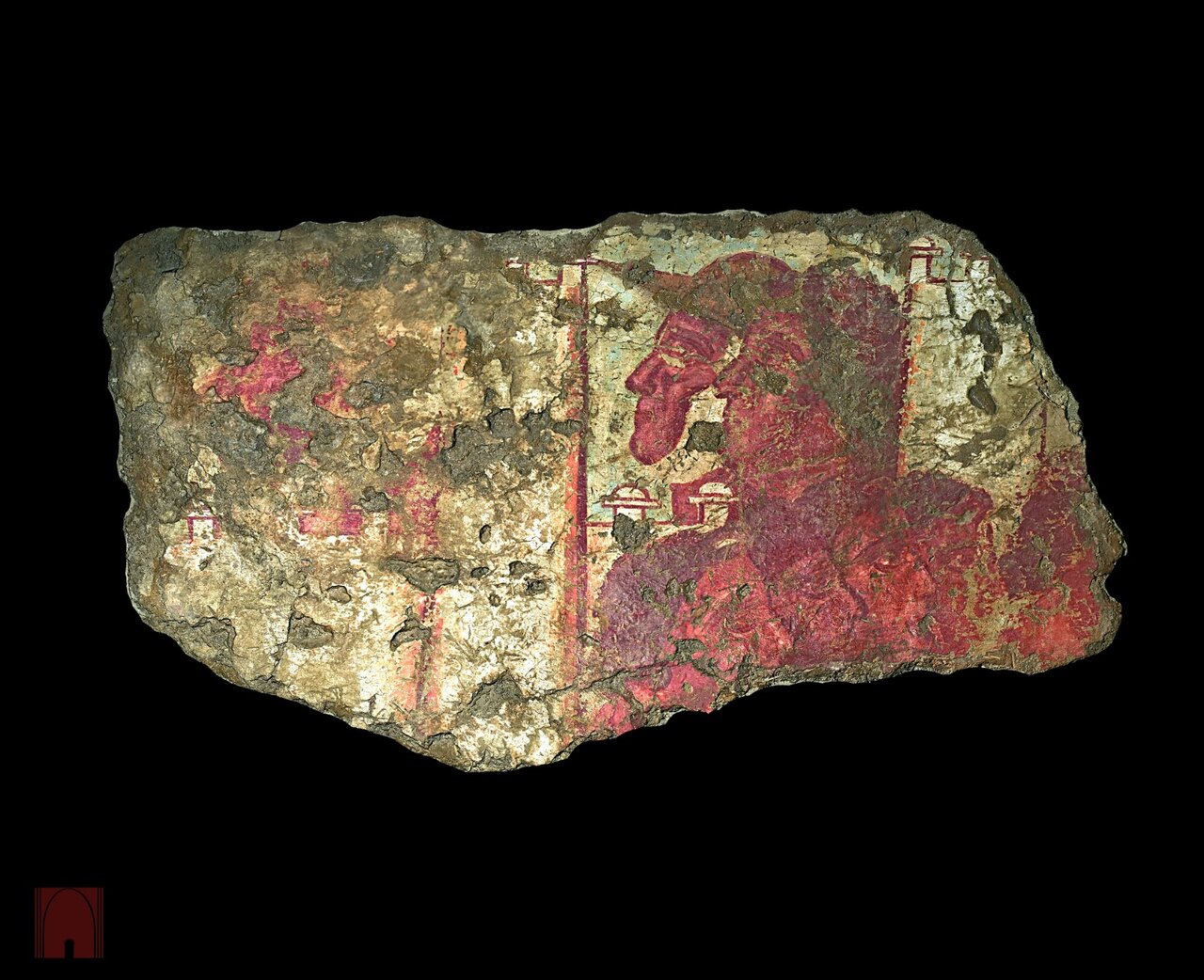Parthian mural excavated from southwest Iran reveals artistic innovation

TEHRAN – A rare Parthian-era wall painting, being kept at the National Museum of Iran, reveals sophisticated artistry and enduring secrets.
The surviving clay-based wall painting dates to the Parthian era (1st-3rd centuries CE) and was discovered at Kuh-e Khwaja in Sistan, southeast Iran.
Executed on a clay-and-straw (kah-gel) surface, it originally formed part of the decorative scheme in a grand palace within the Kuh-e Khwaja complex. The work is now safeguarded in the collections of the National Museum of Iran.
Discovered during 1976 excavations by the Iranian National Organization for the Protection of Antiquities and Italy's ISMEO Institute, the painting depicts an enigmatic procession of male heads alongside a city wall segment. The artist intentionally exaggerated the scale of the heads relative to the architecture to highlight facial features. Two central figures appear in left-facing profile, while subordinate heads below face the opposite direction. Its distinctive ochre, red, green, and white palette sets it apart from contemporaneous works.
Scholarly interpretations vary: some propose it represents a religious ritual or civic assembly, while others identify the figures as deities arranged hierarchically. The work's unusual composition continues to generate academic debate. The volcanic massif of Kuh-e Khwaja ("Mountain of the Master") dominated the Sistan landscape during the Parthian era, serving as a unique blend of fortress, palace, and religious complex. This isolated outcrop near today's Iran-Afghanistan border controlled vital trade routes while showcasing the Parthians' architectural ingenuity.
Constructed using traditional kah-gel (clay-straw) techniques, the site featured a monumental fire temple, royal residences with elaborate stucco decorations, and sophisticated water management systems. Its art—including the famous procession mural with oversized figures—reveals a vibrant fusion of Iranian, Hellenistic, and local styles.
As both a strategic stronghold and spiritual center, Kuh-e Khwaja became a cultural crossroads where Persian traditions mingled with Greek and Central Asian influences. Coins of King Vologases IV confirm its importance before declining in the Sasanian period. Today, its fragile ruins in the Hamun wetlands preserve crucial evidence of Parthian civilization at its height.
AM
